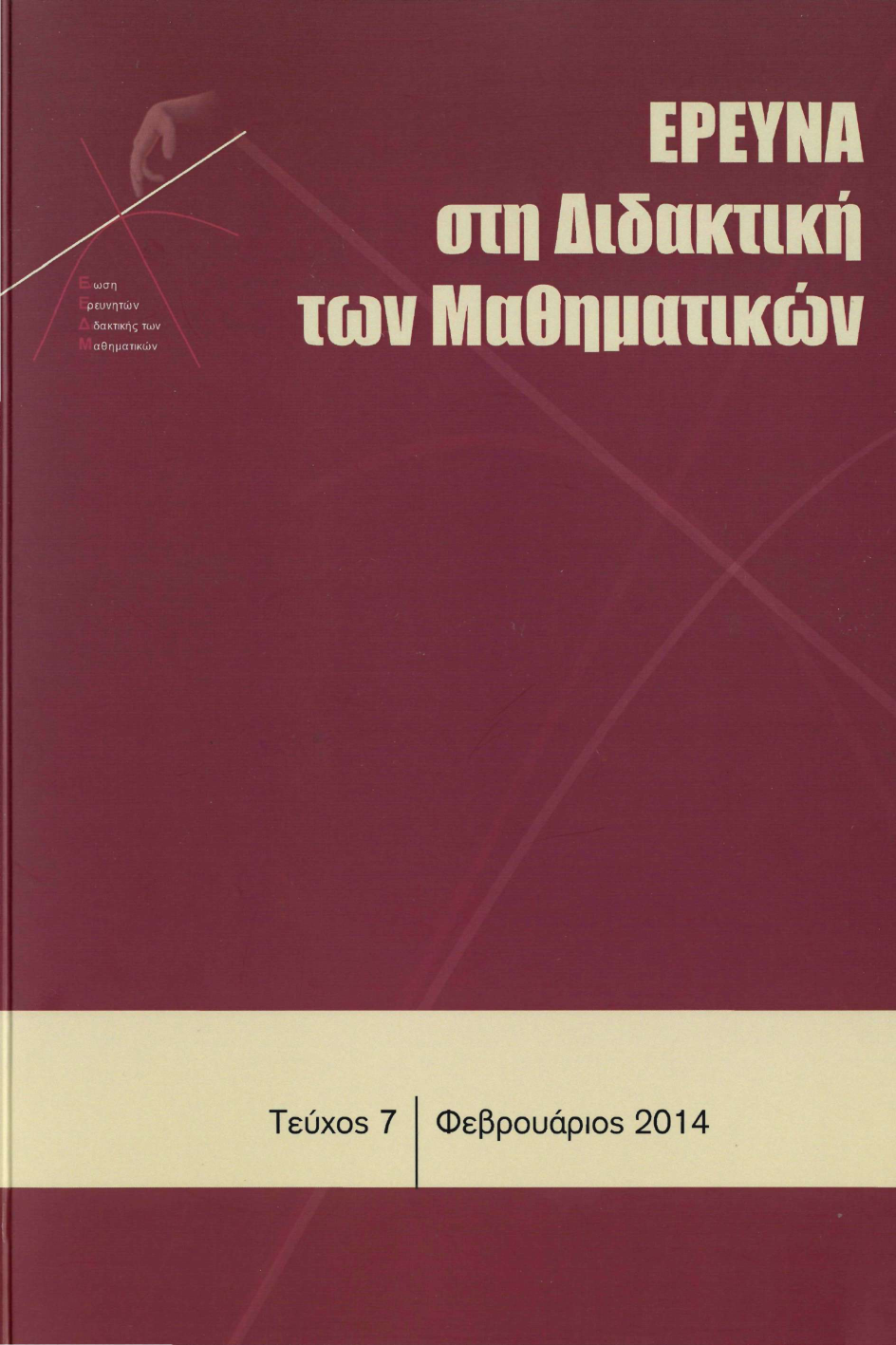ARITHMETIC APPROACH OR GEOMETRICAL ACCURACY? SPONTANEOUS CONCEPTIONS OF TWELVE YEARS OLD STUDENTS TOUCHING IRRATIONALITY

Abstract
In this paper, findings of a teaching experiment, carried out on 12-year-old stu dents are presented and discussed. Particularly, strategies and arguments con cerning the solution of the "doubling the square problem", are analysed, a prob lem which was presented for the first time in the platonic dialogue "Meno". This research focuses on the cooperative solution of the problem and the qualitative data used. Among the results the following are included: a) the illusion of linear ity:"ifwedoublethesideofαsquare,itsareaisalsodoubled",b)the numerical strategy: approximate estimation of the length of the side of the square followed by its construction and c) the geometric strategy: cutting the initial square, recon structing it, representation of a new square that has double its initial area and geometric construction. Geometry, in comparison with arithmetic, reveals spon taneous perceptions made by the students that lead to irrationality. Nowdays, geometric culture is on the decline, while excessive standardisation and arith- metisation could hurt the intuition. However, the geometric figure, as in ancient Greece, is a dynamic context, where the exactness of the length could support the comprehension of irrationality
Article Details
- How to Cite
-
Κόσυβας (Giorgos Kosyvas) Γ. (2018). ARITHMETIC APPROACH OR GEOMETRICAL ACCURACY? SPONTANEOUS CONCEPTIONS OF TWELVE YEARS OLD STUDENTS TOUCHING IRRATIONALITY. Research in Mathematics Education, (7), 9–48. https://doi.org/10.12681/enedim.18837
- Section
- Articles

This work is licensed under a Creative Commons Attribution 4.0 International License.
Authors who publish with this journal agree to the following terms:
Authors retain copyright and grant the journal right of first publication with the work simultaneously licensed under a Creative Commons Attribution licence that allows others to share the work with an acknowledgement of the work's authorship and initial publication in this journal.
Authors are able to enter into separate, additional contractual arrangements for the non-exclusive distribution of the journal's published version of the work (e.g. post it to an institutional repository or publish it in a book), with an acknowledgement of its initial publication in this journal.
Authors are permitted and encouraged to post their work online (preferably in institutional repositories or on their website) prior to and during the submission process, as it can lead to productive exchanges, as well as earlier and greater citation of published work (See The Effect of Open Access).


